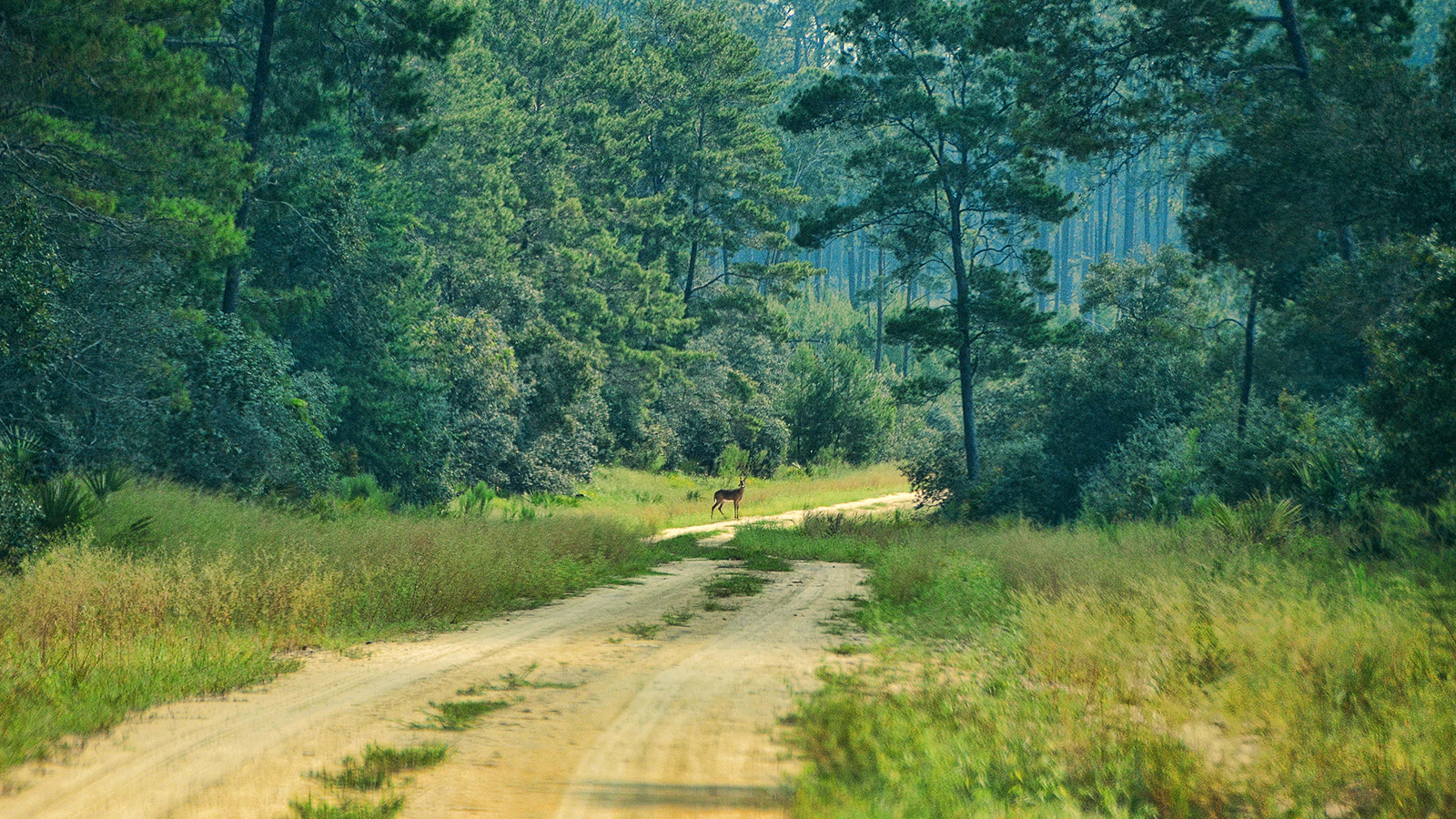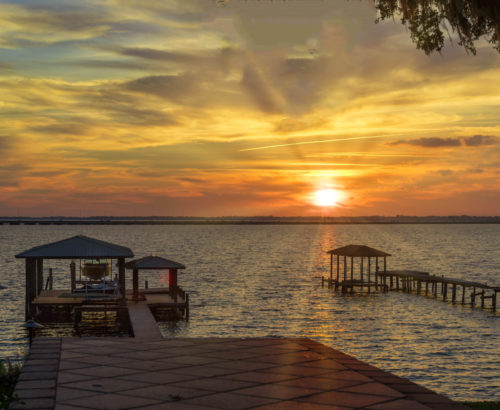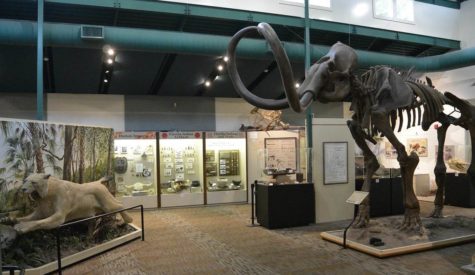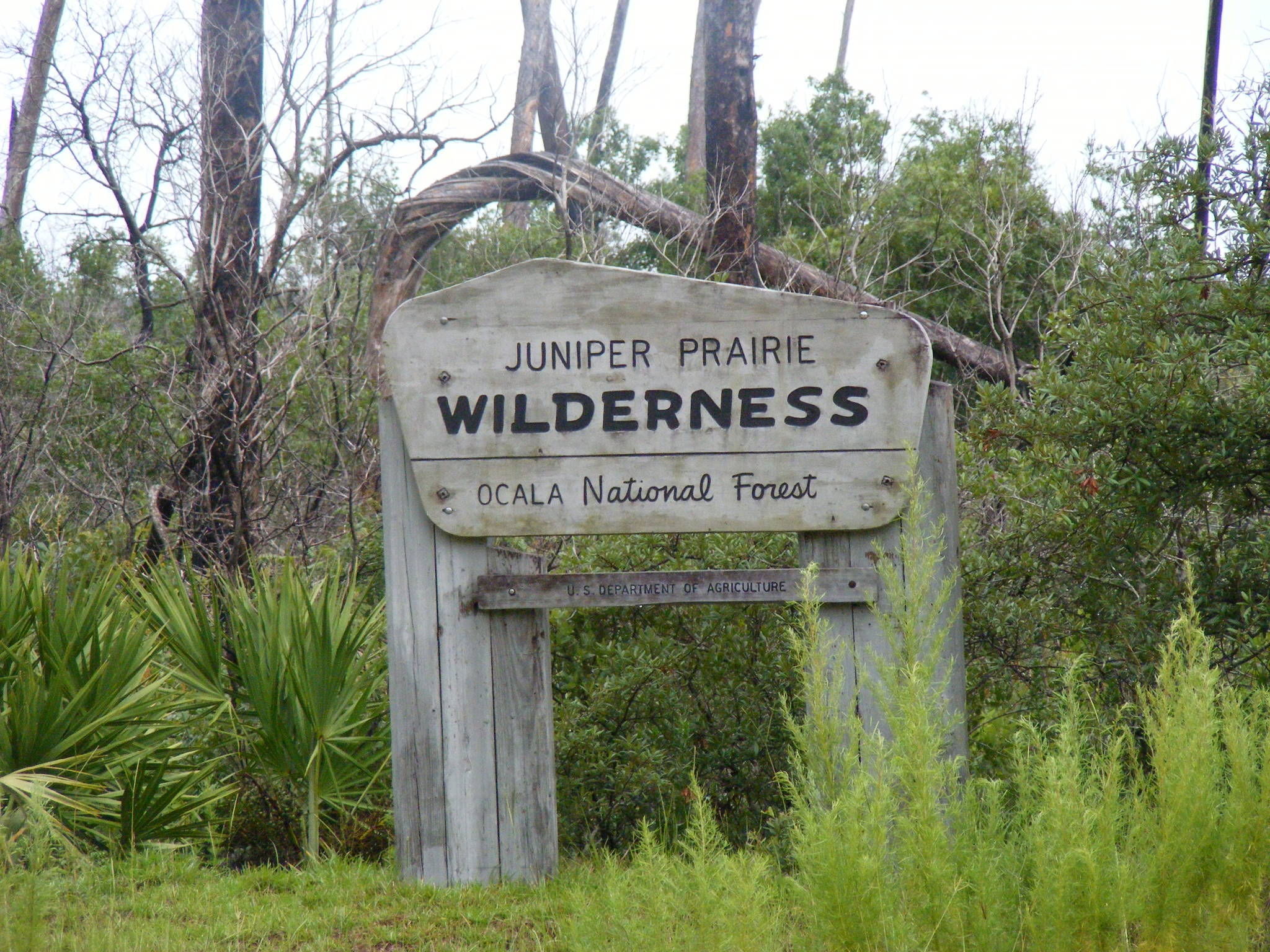



The Big Scrub, the worlds largest continuous sand pine forest created from ancient sand dunes, lies at the heart of the corridor along with Florida’s largest population of black bear. Among the rolling sand hills are vast wet and dry prairies and crystalline springs. Lush floodplain forests lay at the foot of a designated American Heritage River, the St. Johns. Where water meets bedrock, notable features include sinkholes, caves and springs. Indigo snakes and sand skinks are endangered species along with the Florida Scrub jay, a threatened species. They make their home in the Big Scrub along with many rare plants, including the Florida bonamia, scrub buckwheat, scrub paw-paw and Lewton’s polygala. Long leaf pine penetrates the scrub forest with spectacular views of wiregrass forming a soft haze on the forest floor.
Freshwater springs such as Silver Springs, Fern Hammock Springs, Salt Springs and Silver Glen Springs are the most popular public attraction within the Big Scrub, creating crystalline rivers lined with lush forest and cypress floodplains that stand in sharp contrast to the sandy scrub environment. Since 1878, Silver Springs, one of the largest springs in the world, has been a focal point for regional tourism centered on Silver Springs Attraction with its signature glass bottom boats. It is recognized world-wide as a historical setting for the film and television industry. At Fern Hammock Springs, nicknamed “The Aquarium,” spring boils look like underwater dust storms with gray images flickering across a turquoise base. Silver Glen Springs, the “Natural Well,” hosts swirling schools of mullet, striped bass, blue crab, sting rays, and seagoing fish that have taken up permanent residence in this warm, brackish outflow that merges with the St. Johns River.

The human legacy runs deep within the corridor. Shell middens (mounds of discarded fresh water shellfish remains) at Bluffton Recreation Area and elsewhere mark village sites of the Timucuan Indians, an ancient culture of farmers and hunters that inhabited the region for nearly 10,000 years. From the Age of Exploration through the mid-1700s, European and American explorers established fortifications and small settlements along the St. Johns River.

James Spalding was one such pioneer who created a trading post at Astor in 1763. In 1765 & 1774, botanist William Bartram explored the nooks and crannies of the St. Johns and many of its spring fed tributaries. He gave a romantic description of Salt Springs as “an amazing crystal fountain which meanders six miles through green meadows, pouring its limpid waters into the great Lake George, white sand and small particles of shells are thrown up with the waters.” Inspired by Bartram’s romantic description of Salt Springs, Samuel Taylor Coleridge penned his epic poem Kubla Khan.
By 1858, homesteading began in the more fertile lands around the Big Scrub, and in the 1870s, a circuit-riding preacher traversed the hills by horseback, preaching in the communities of Salt Springs, Pat’s Island, Astor and Paisley. In the fall of 1876, Reuben and Sara Jane Long established a homestead in the Big Scrub on Pat’s Island, a unique, high and dry island of long leaf pine within the scrub.
When the government offered to buy their land, the settlers of Pat’s Island moved, but the Long family cemetery remains – as does the legacy of their young son Marvin, who raised a fawn and had his tale retold many years later in The Yearling by Pulitzer Prize-winning novelist Marjory Kinnan Rawlings.
On November 24, 1908, President Theodore Roosevelt designated 202,000 acres of scrub as national forest lands, today known as the Ocala National Forest. It was the first national forest east of the Mississippi and the second within the Continental United States. Its vast and varied landscape stretches from Florida’s midsection, passing through Marion, Lake and Putnam Counties. Dense sand pine, xeric oak scrub and infertile, dry sandy soil made the Ocala Forest a poor choice for settlement and agriculture.
Stories of the ancient people of this land and the hardy Florida pioneers who came later, and further explanations of the natural environment are interpreted through exhibits, original buildings and artifacts at Silver River State Park and Museum in Silver Springs and at the Pioneer Settlement for the Creative Arts in Barberville.
The Florida Black Bear Scenic Byway provides a connection between communities and the outdoors. Campgrounds such as at Salt Springs are popular with the ‘snowbirds’ escaping brutal northern winters. Gray hair and Midwestern accents define this tidy community where no one minds giving their name, and roughing it is making the short hike to the picturesque springs to watch the mullet and the blue crab.


The Florida Trail in the Ocala National Forest is a certified Florida National Scenic Trail, and has been called the “crown jewel” of the Florida Trail system. It traverses a range of natural communities including extensive stands of longleaf pines, and scattered communities of sand pines, other short leaf pines, and hardwoods. The trail also skirts open prairies and ponds that are excellent for viewing wildlife.
For a deeper exploration of the forest, off-highway vehicle trails will guide visitors to places like Lake DeLancey, a shallow lake encircled by a prairie ecosystem. Tall prairie grass will hide the water, while catfish, largemouth bass, sunfish and bluegill swim beneath the lily pads. These OHV trails traverse through sections that are relatively open for spotting wildlife such as deer, fox squirrel, and red-cockaded woodpeckers. For a more quiet exploration, horseback trails offer safe passage through the leaning sand pines of the Big Scrub and the straight sturdy long leaf pines of the flat woods. There are also numerous lakes and grassy prairies where wiregrass thrives, carpeting the forest floor in a misty haze that turns to lilac in winter.
Hunting in the Ocala National Forest is an activity that has linked people to the land since humans first walked on the forest. The search for the perfect Thanksgiving turkey is still a tradition among local residents. Their stories have been passed from generation to generation and are very much a part of the Ocala.
Canoes have carried people and materials on Florida’s rivers, lakes and streams for thousands of years. Fishing meant survival for the native people. Today’s boaters and anglers flock to Lake George, Lake Kerr and dozens of smaller lakes for world class bass and bream fishing, while paddlers seek out the beauty of the clear cool springs and the challenging turns of the Ocklawaha River, a dark, slow-moving, twisting river with little fluctuation in water level.
The bicycle has become a popular mode of travel for over a century. It not only moves the body but also the intellect, the sprit and the imagination. A visit to the Heart Island Conservation Area will allow visitors to escape to another time, centuries ago, seeing what Florida was like when it was undeveloped. A great number of species lives on the Island, including the Florida black bear, the gopher tortoise, deer, otters and woodpeckers to name a few.
The Florida Black Bear Scenic Byway provides access to a multitude of natural, scenic, recreational and heritage resources. From casual observation to hands-on exploration via SR 40, loop roads, park trails, waterways, visitor education centers, museums and roadside stations, there are a variety of ways to experience, learn from and enjoy the unique features that belong to this significant region of Florida.